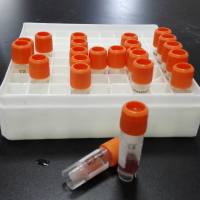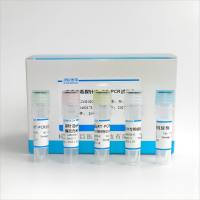A standard method for evaluating inhibitory effects on preerythrocytic parasites in murine malaria models is to measure the time to patency of a blood-stage infection following a sporozoite challenge. The prevention of a blood-stage infection or a delay in patency suggests that preerythrocytic parasites have been eliminated or that liverstage development has been inhibited. However, susceptibility to a challenge with blood-stage parasites must also be determined to conclude that preerythrocytic parasites and not blood-stage parasites were targeted. As a more direct method, liver-parasite burden can be measured. Due to the paucity of liver-stage parasites at physiological challenge doses,<100 sporozoites (1 ), liver-stage parasites are very difficult to detect by conventional methods, such as immunofluorescence or Giemsa staining of parasites in liver sections, unless a very large challenge dose is used (>1.0�106 sporozoites) (2 ). Molecular techniques that target Plasmodium-specific small subunit rRNA are much more sensitive, requiring less than 5.0�104 sporozoites to quantitate liver stages (3 4 ). Plasmodium rRNA has been now measured in total liver RNA by spot-blot hybridization with Plasmodium-specific rRNA probes (3 ) and as described here by quantitativecompetitive reverse transcriptase-polymerase chain reaction (RT-PCR) (4 ).






